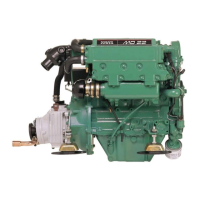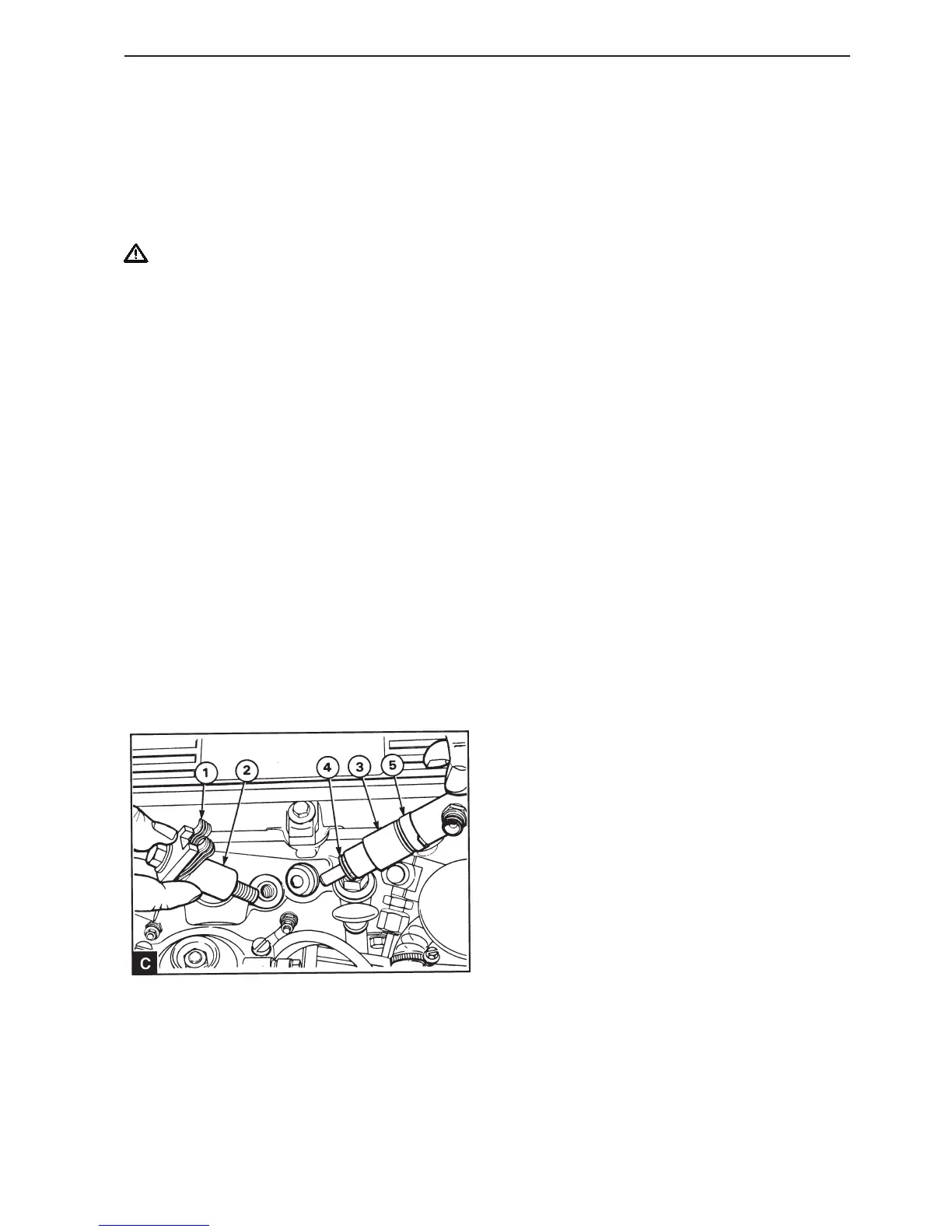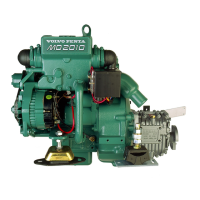85
Fuel injection system
Injectors, fault-tracing
A faulty injector can cause engine misfires.
To find the faulty injector, run the engine at high
idling speed. Slacken off and tighten the connector
nut for the delivery line for each injector. When the
connector nut for the faulty injector is slackened off
it has little or no effect on the engine speed (RPM).
WARNING! Ensure that fuel is not sprayed
onto your skin.
Injectors, replacement
(19A-02)
1
Remove the leak fuel line.
2
Remove the connector nuts for the delivery lines
from the injectors and from the fuel injection pump.
Hold the pump outlet with a wrench to prevent the
join from moving when the terminal is slackened off.
Do not bend the pipe. Replace the pipe clamps if re-
quired.
3
4
Check the holder unit for wear and deformation and
replace the unit if required. Replace the injector
seat gasket.
5
Check that the injector guide ring (C5) is in position
in the cylinder head and install the new injector and
seat gasket. Check that the injector is not crooked.
Install the holder unit and the spacer with holder
arms placed at right angles on the injector’s projec-
tion. Tighten the holder mounting screws to 43 Nm.
6
Install the delivery lines and tighten the connector
nuts to 18 Nm. Hold the pump outlet with a wrench
to prevent the join from moving when the nut is
tightened. Install the pipe clamps if required.
7
Install the leak fuel line.
8
Start the engine and check that there are no air and
fuel leaks.
Slacken off the mounting screws for the injector
holders. The spacer piece (C2) should either be
31.5mm or 7 mm long, depending on which type of
injector is used. If a short spacer is used, lift the
spring unit when the mounting screw is removed.
This ensures that the mounting screw threads do
not go in the hole in the lower spring. Remove the
holder (C1) and the spacer washer. Remove the in-
jector (C3) and the seat gasket (A4).

